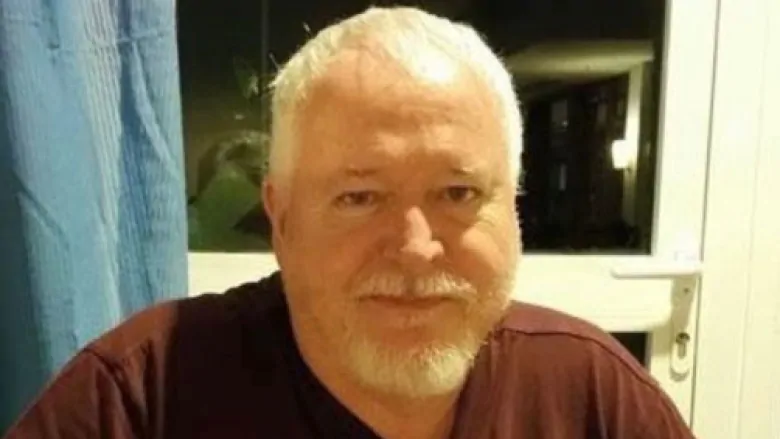Serial Killer Bruce McArthur Pleads Guilty to Eight Counts of Murder

Credit to Author: Rachel Browne| Date: Tue, 29 Jan 2019 15:20:05 +0000
Bruce McArthur pleaded guilty to eight counts of first-degree murder on Tuesday in a Toronto courtroom that was packed with family and friends of the men whose lives he cut short.
Wearing a black sweater over a plaid shirt, McArthur sat motionless as the Crown read out new details of the gruesome crimes.
Family members who occupied the first five rows of the court wiped away tears, while relatives for one of the victims listened in on the phone from London, England.
McArthur is guilty of first-degree murder in the deaths of Selim Esen, Andrew Kinsman, Majeed Kayhan, Dean Lisowick, Skandaraj Navaratnam, Soroush Mahmudi, Kirushna Kan withagaratnam, and Abdulbasir Faizi. The 67-year-old former landscaper preyed on men with ties to the city’s Gay Village who went missing between 2010 and 2017. The men were between 37 and 58 years old. The remains of seven of the men were found among garden planters at a Toronto home where he worked. The eighth victim was located in a ravine near that property.
The court heard on Tuesday how he kept the belongings of some of his victims, and that in a search of his bedroom, police found a duffle bag containing duct tape, a surgical glove, rope, zip ties, a black bungee cord and syringes.
“These items belonged to McArthur,” the Crown told the court, adding that he staged some of his victims and that many murders were “sexual in nature.” Police refused to say what they meant by the “staging” of the victims.
The Crown went on to detail some specifics for each of the cases. McArthur killed Navaratnam first, on or about Sept. 6, 2010, and kept a bracelet of his. Police found it in McArthur’s bedroom. Navaratnam’s DNA was found on a piece of leather lacing that police found in McArthur’s van.
McArthur killed Faizi on or about Dec. 29, 2010. Faizi’s abandoned vehicle was located near a home that McArthur had access to at the time of the murder.
The murder of Kayhan, on or around Oct. 18, 2012, was sexual in nature, the Crown informed the courtroom. “Mr. McArthur staged him after he killed him,” the Crown said.
The murders of Mahmudi, Kanagaratnam, Lisowick, and Esen were also sexual in nature, and there is evidence that a ligature was used in each case, and staging. Mahmudi died on or about August 15, 2015; police located a coat in McArthur’s van that contained his DNA, and that was also connected to the staging of other victims. Kanagaratnam was killed on or about Jan. 6, 2016. Lisowick was killed on or about April 23, 2016, the Crown said. McArthur kept a piece of his jewelry, which police found in his apartment.
Esen was killed on or about April 16, 2017. There is evidence of confinement with ropes during the murder. His DNA was found inside McArthur’s van and on the murder weapon, which was also found in the van. McArthur kep Esen’s notebook. Police found it in his apartment.
McArthur killed Andrew Kinsman on or about June 26, 2017. The murder was sexual in nature, and there is evidence he was confined using ropes during the murder. Police found Kinsman’s calendar which had an entry for “Bruce” on June 26, and video surveillance showed Kinsman outside of his home that day and getting into McArthur’s van. Kinsman’s DNA was found inside McArthur’s van, and on the murder weapon which was also inside the van.
McArthur said “yes your honour” after the Crown read the brief synopsis of facts. His sentencing hearing is expected to commence on February 4, at which time a full agreed statement of facts will be read aloud. Tamil, Farsi and French interpreters have been requested to be in attendance next week for relatives of some of the victims.
Det. Dave Dickinson and Insp. Hank Idsinga told reporters that a conviction for first-degree murder carries an automatic life sentence with no parole for 25 years. The judge told the courtroom that the only issue to be decided at sentencing is whether his parole ineligibility will run concurrently or consecutively. He will not be be paroled until he is at least 91.
McArthur was first arrested last January and has been held in custody ever since.
McArthur eventually waived his right to a preliminary hearing, meaning his case would go immediately to trial. That trial was scheduled for January 2020, and was expected to take three to four months.
McArthur was previously married and has two children. When he was older, he moved to the Church and Wellesley area of Toronto.
The case against Bruce McArthur highlighted tensions between the Toronto Police and the city’s LGBTQ+ communities, as they had long believed a serial killer was preying on men in the Village.
An independent investigation into how the Toronto Police deal with missing persons cases was struck last year. The review plans to consult with members of the public, groups, and experts and plans to conclude in 2020.